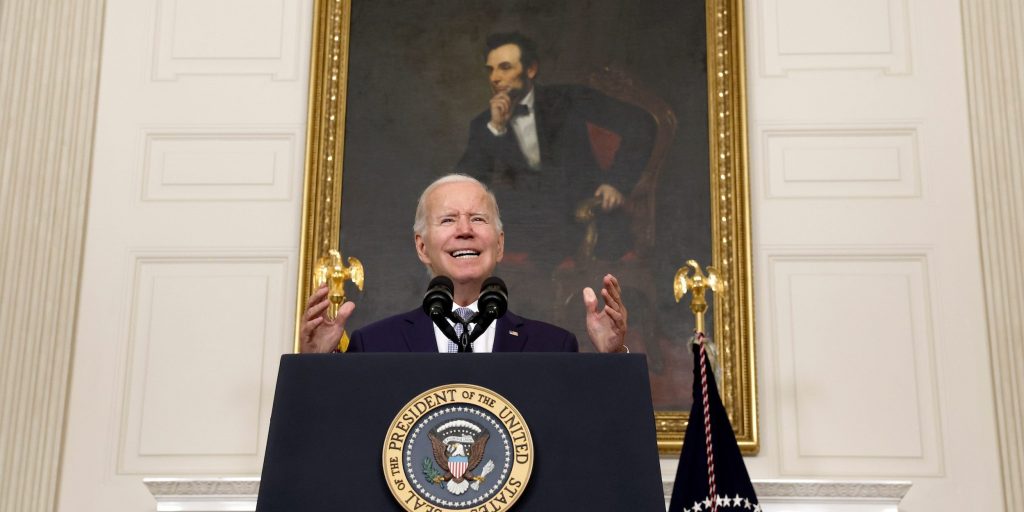- Slower economic growth is "consistent with" moving toward lower inflation, Biden said Thursday.
- The president played down recession worries, highlighting low unemployment and healthy spending trends.
- Fed Chair Powell made similar remarks Wednesday, calling weaker growth "necessary" to fight inflation.
When life gives you negative-economic-growth lemons, you make lower-inflation lemonade.
President Joe Biden pushed back against recession concerns on Thursday and painted gloomy economic data as a sign the US is shifting into a period of "stable" growth and cooler inflation. Data out Thursday morning showed the economy shrinking at a 0.9% annualized rate in the second quarter. That landed below economists' forecasts and marked a second straight quarterly contraction.
Though the report paints a bleak picture of the US economy, Biden said the quarterly decline is part of a move toward a healthy expansion.
"There's no doubt that we expect growth to be slower than last year and the rapid clip we had. But that's consistent with the transition to a stable, steady growth and lower inflation," the president said during a roundtable discussion with CEOs and members of his administration.
Treasury Secretary Janet Yellen echoed the president's sentiments, calling the report a sign the US is in a "transitional moment" toward "steady and sustainable growth."
The push toward a lower-inflation environment has dominated the White House's economic agenda in 2022. Extraordinarily strong demand and lingering supply-chain issues lifted price growth to a 9.1% year-over-year pace in June, reflecting the fastest inflation since 1981 and further straining Americans' finances. Soaring prices have played a major role in pulling economic sentiment to historic lows, and as midterm elections loom, Biden has increasingly shone the spotlight on efforts the administration and the Federal Reserve have taken to blunt inflation.
The administration has also emphasized the healthy pockets of the economy amid growing fears of a recession. The Thursday GDP report intensified fears of a downturn, as back-to-back quarters of economic decline are generally regarded as indicative of a "technical recession."
The Council of Economic Advisors published a blog earlier in July clarifying the criteria for a recession, noting the National Bureau of Economic Research's definition is far more stringent. The organization serves as a semi-official authority on when downturns start and end, and it deems recessions to be "a significant decline in economic activity that is spread across the economy and that lasts more than a few months." With the US still adding nearly 400,000 jobs a month and the unemployment rate at a historic low of 3.6%, it's unlikely a recession began in the second quarter.
Biden highlighted areas of strength in the economy during the roundtable, adding they confirm the economy fared better through the second quarter than the GDP report alone suggests.
"There's going to be a lot of chatter today on Wall Street and among pundits about whether we are in a recession," Biden said. "But if you look at our job market, consumer spending, business investment, we see signs of economic progress in the second quarter as well."
The commentary mirrors that from Fed Chair Jerome Powell's Wednesday press conference. The central bank raised interest rates by another 0.75 percentage points on Wednesday in its latest move to cool demand and slow inflation. The chair played down concerns that the country is currently in a recession and noted that slower growth is "necessary" to reach sustainable inflation levels.
"I do not think that the US is currently in a recession," Powell said. ""There are too many areas of the economy that are performing too well."

